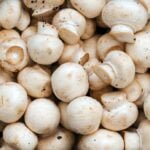what is mushroom substrate
Title: The Essentials of Mushroom Substrate: A Comprehensive Guide to Mycelium Growth and Mushroom Production
Introduction (Approximately 150 words):
Mushroom substrate plays a crucial role in the cultivation of mushrooms, serving as the material that facilitates the growth of mycelium — the vegetative part of the fungus. Without a suitable substrate, the successful cultivation of mushrooms would be virtually impossible. Understanding the relationship between substrate and mycelium growth is essential for growers looking to produce their own mushrooms.
Section 1: Understanding Mushroom Substrate (Approximately 400 words):
Mushroom substrate refers to the material on which mycelium grows. Various materials can be used as substrates, including straw, logs, coffee grounds, and agricultural waste products. Each substrate option has its own advantages and disadvantages, and the choice depends on availability, cost-effectiveness, and ease of use. For example, straw is a popular choice due to its availability and compatibility with many mushroom species, while coffee grounds are readily available in urban areas. Both have the added benefit of being organic materials. Agricultural waste products, such as corn cobs or sawdust, are often used for their affordability and potential to be efficiently recycled. Logs, specifically hardwood logs, are used for mushrooms that naturally thrive on deadwood substrates. It’s important to consider the specific requirements of the chosen mushroom species when selecting a substrate.
Section 2: The Key to Mushroom Production: Mycelium Growth (Approximately 500 words):
Mycelium growth is a critical step in mushroom production, as it converts the substrate into a suitable environment for mushroom fruiting. Optimal conditions for mycelium growth include maintaining the right temperature, humidity, and oxygen levels. Mushroom spawn serves as the inoculant that kick-starts mycelium growth. Spawn is the mycelium grown on a nutrient-rich material such as grains. The process of inoculating the substrate with mushroom spawn involves mixing the two components thoroughly. Stages of mycelium growth include colonization, during which the mycelium spreads and colonizes the substrate, and consolidation, where the mycelium network strengthens and prepares for the next stage — mushroom fruiting.
Section 3: Step-by-Step Guide to Mushroom Production with Straw Substrate (Approximately 500 words):
Straw substrate is a popular option due to its availability and compatibility with various mushroom species. To prepare straw substrate, start by sourcing suitable straw, either wheat, rice, or oat straw, and subsequently conditioning it through hydration, pasteurization, and supplementation. Hydration involves soaking the straw to reach the ideal moisture content. Pasteurization, which eliminates potential contaminants, is achieved by heating the straw to a specific temperature range. Supplementation involves adding additional nutrition to enhance mycelium growth.
During the inoculation process, it’s crucial to ensure even distribution of mushroom spawn throughout the prepared straw substrate. Thorough mixing is necessary to achieve this goal. Maintaining proper moisture levels throughout the process is vital, as excess moisture can lead to contamination, while insufficient moisture can halt mycelium growth. Once inoculated, the straw substrate needs to be placed in a controlled environment that provides ideal conditions for mycelium growth, including temperature control, humidity maintenance, and protection against contamination.
Section 4: Expanding Possibilities with Mushroom Substrate (Approximately 350 words):
While straw is a commonly used substrate, there are alternative options that provide unique advantages. Coffee grounds are an accessible substrate, particularly in urban settings where coffee waste is abundant. Agricultural waste products such as corn cobs or sawdust are cost-effective options and offer a sustainable means of utilizing excess agricultural materials. Wood logs, especially hardwood logs, are suitable for mushrooms that thrive on deadwood substrates. Each alternative substrate choice requires specific techniques and considerations to ensure successful mycelium growth and subsequent mushroom production. It’s essential to adapt cultivation techniques and environmental conditions based on the specific requirements of the chosen mushroom species.
Conclusion (Approximately 200 words):
Mushroom substrate and mycelium growth are fundamental to successful mushroom cultivation. By understanding the importance of mushroom substrate and the process of mycelium growth, growers can effectively produce their own mushrooms. Exploring various substrate options and experimenting with different cultivation techniques can expand possibilities and establish a personalized approach to mushroom production. Research and knowledge play a crucial role in achieving successful mushroom cultivation. With an understanding of mushroom substrate and mycelium growth, growers can embark on a rewarding journey of cultivating their own delicious and nutritious mushrooms. So, put your knowledge into practice, select your substrate wisely, and get ready to enjoy the fruits of your labor!




